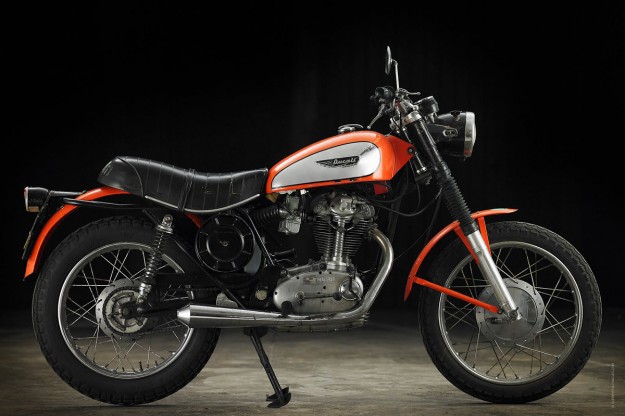
This Ducati Scrambler has a unified feel even with its swoopy lines, the centre axis of the seat and tank working together and the pipe offering a hint of the hallowed horizontal plane.
The Ups and Downs. We second the benefits of bush, bearing and seal overhauls that Mule covered in his own guide to the performance side of bike building. Full front-end upgrades are also nice, but if you’re raiding the piggy bank to get things rolling, there is still improvement to be had for much less outlay.
Experiment with swapping in aftermarket springs or from other models to obtain the rates you need. Then play with preload to position suspension travel where you can use it. (Simple mods to your spacers in lieu of preload caps work fine.) Adjust the weight of your fork oil and its levels to get a setup that suits your weight and riding style. A personalized setup on even the most basic suspension is massively confidence inspiring.
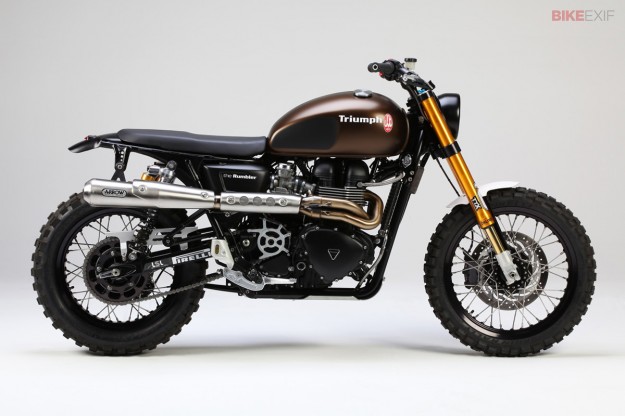
JvB Moto does an amazing job yet again with the Tridays bike. And for those whose donor bike is worth less than these forks, all is not lost.
Then match your upgrades out back. We tend to go mid-range on the shocks. Something with at least a few steps of damping adjustment and the right spring rates.
Makers such as IKON and Progressive Suspension have a range of spring weights and shock body lengths that you can explore over a phone call. Remember: You’re not setting up a MotoGP bike, you’re just trying to get things into the right ballpark for now.
Many builders will also add rear ride height and wheel travel, fitting 20-30mm longer shocks than stock with an increased stroke. While doing this, watch chain clearance, swing arm angle and brake cable pull. It’ll also change your front-end geometry. A little is usually welcome, but don’t go too far without considering (and testing) the effects.
A quick word on bike weight. Yes, lighter is better and easier to handle, and means you’ll last longer when you’re muscling it around away from the black top.
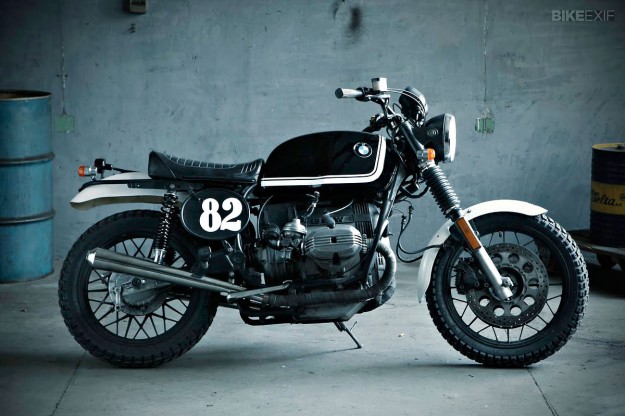
Fuel does something right up our alley. This BMW is no feather weight for sure, but bound to achieve the its ultimate goal of a dusty, mile wide grin.
The Little Things. Make it look good from more than just side-on. Take it a step further, and resolve the design from as many angles as possible. If there’s one thing we’d recommend paying a professional to do, it’s to create a neatly looped rear sub frame.
That simple 180-degree bend ties the back of the bike together visually as well as structurally. And you can use it to achieve your desired lines, cradle your fender, define the edge of the seat, and mount a rear stop light.
You’ll notice a lot of scramblers, especially older ones, have elements of negative space in their design. Around the cylinders, the tank-to-seat gaps, between the rear wheel and fender, and between the leading edge of the tank and the steering head. The trick? Keep it consistent and intentional. A sudden tank/seat gap on a modern Triumph can look odd because the bike is so visually ‘dense,’ whereas on its grandfather the same gap works beautifully.
If you’re a lover of the thin seat, we urge you to reconsider. Extra foam is your friend, especially when you’re coming down and your machine is going up. Besides, a thicker seat looks the part on a scrambler.
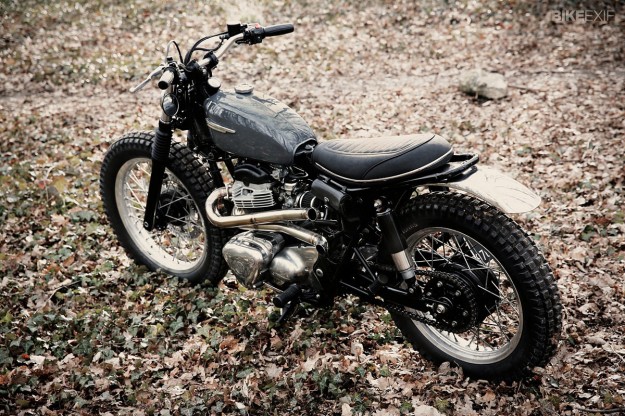
The Skuddesign W650 has the seat, tank, frame loop, motor and tire spacing nicely matched for a neat package—though some suggested approaching the pipes a little differently.
Resist the urge to run fender-less. Yes, it looks cool, but your chunky tread pattern will throw up serious sludge. Raise the front fender slightly off the tire for mud clearance. Alloy is our pick, with the odd rubber mount to avoid cracking. Out back, go beyond Charlie Trelogan’s mention of café racer cut off points and get your fender out past the axle. Cheat if you must: Use a short guard for hero photos, and use the number plate to keep the muck in check.
Finally, if you want that factory look to keep pundits guessing, give thought to the curves and edge radii of your motor, tank, lighting and seat. For example, beautiful rounded cases enjoy a similarly curvaceous tank, but try a more rectilinear form if your motor is of a geometric age.
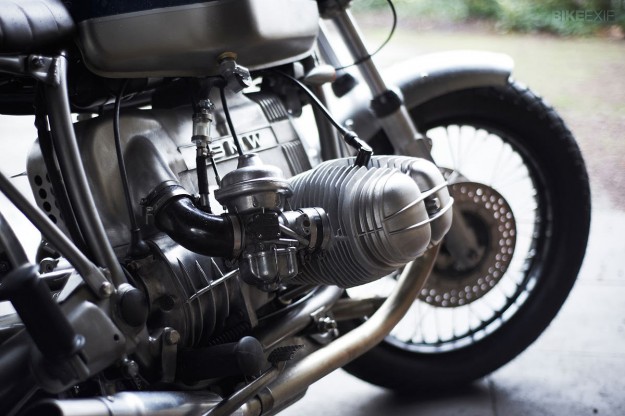
BMW R series engine castings, shown on this machine from Untitled, demand complementary curves and radii elsewhere for a factory feel.
Hopefully this has left you with a few tricks up your sleeve, so now go build your scrambler. And as a wise man once shouted from atop a Honda CL90, “Of all the paths you take in life, make sure a few of them are dirt”!
Title image by Götz Göppert, featured in the book The Ride. To see how Triumph engineers and road testers turned their own Scrambler into a genuine offroad weapon, check out the Triumph Tramontana.